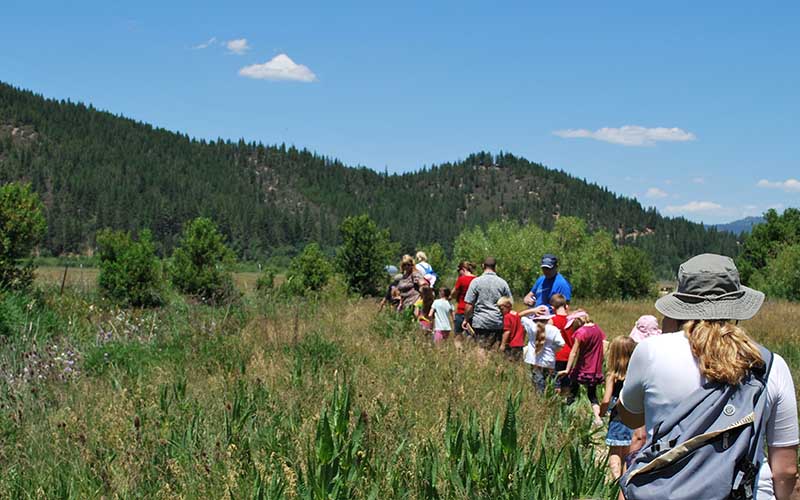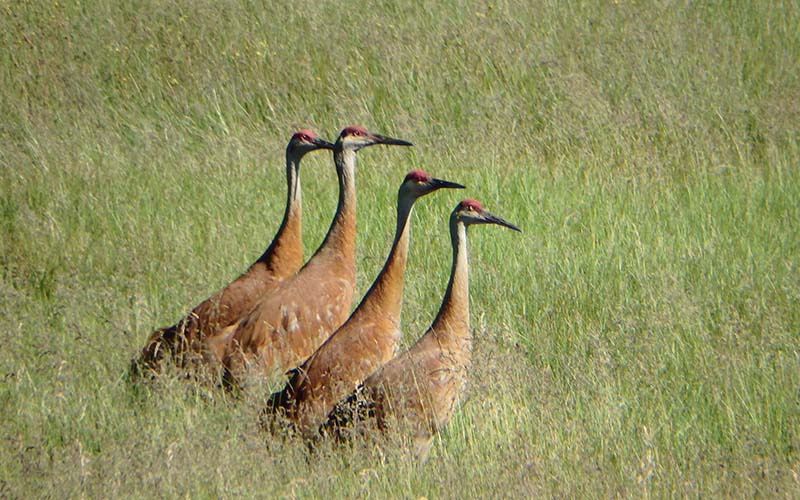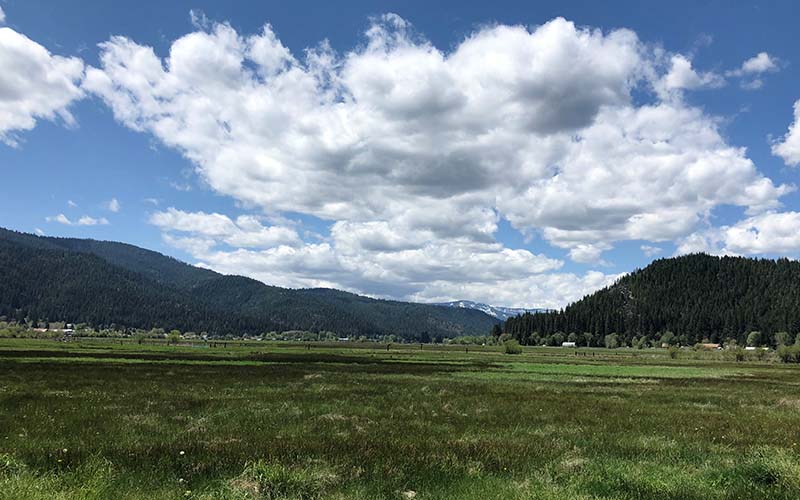About Leonhardt Ranch Learning Landscape
Hours: The Preserve is primarily an outdoor classroom for local schools. It is open to the public sunrise to sunset, when school groups are not present. Thank you for your cooperation!
Parking: Please park by the tennis courts, across the street from the entrance, or walk there from town. You may also access from the bike path, when school groups are not present.
Motorized Vehicles: No motorized vehicles on the property.
Pets: Due to nesting bird habitat and livestock, NO dogs are allowed on the preserve.
Trails: Please keep foot traffic to the levee trail. No bikes please. Occasionally, expect trail closures due to nesting birds and/or restoration projects. Signs will be posted and the website updated.
Restrooms: No restrooms on-site, plan ahead accordingly.
Trash: Please pack out your trash. No trash receptacles on-site.
Smoking: Smoking is prohibited (school-use zone and a fire hazard).
Plants & Wildlife: Please leave plants and wildlife undisturbed. Want to help out? Pick up trash and leave no trace.
Events: Permits are required for all organized, non-school group events. Please email info@frlt.org with your full name, contact info, and a short description of your group/event and our team will get back to you. (No weddings or other large private events at this time.)
The 46-acre property is centrally located in the town of Quincy and extends outdoor education and recreation options from the bike path and nearby schools.
The preserve includes meadow, riparian, wetland, and pasture habitats with a diversity of wildlife and birds including beavers, coyotes, frogs, trout, raptors, Sandhill Cranes, Red-winged Blackbirds, waterfowl, and unique songbirds like Bullock’s Oriole and Yellow-breasted Chat.
The trail is approximately 1.3 miles out and back, and features interpretive signs with natural history and wildlife information made by Quincy High School students.
Directions
The Leonhardt Ranch Preserve is located in Quincy across from the Quincy Jr/Sr. High School on Quincy Junction Road (also near the bike path). The entrance is just north of the High School and on the west side of the road. You can park by the tennis courts, across the street from the entrance, or walk there from town. Look for a metal gate with signs on it.
Map
Download a map of the preserve to use while at the property.
Walking
The public access walking path is on an elevated levee, making it a high and dry trail year-round. The Leonhardt Ranch Learning Landscape is part of a large, inter-mountain valley so be prepared for full sun and no shade–a hat is a great idea. The trail follows Boyle Creek, a tributary to Spanish Creek and is a great example of a dynamic landscape. The creek is channelized and manipulated by humans but rich with wildlife and seasonal variations. The path is currently an out-and-back walk but we hope to create a loop trail in the future.
Birding
Bring your binoculars, there is almost always something cool to see! With wetlands, cattail ponds, willow stands, and big open fields with nearby forest, expect to see a diversity of avian life.
- Spring/Summer
Waders like Sandhill Cranes and Killdeer; songbirds like Red-winged Blackbirds, Western and Mountain Bluebirds, and Say’s Phoebe and other flycatchers; an abundance of Canada Geese and a diversity of ducks like Mallards, American Wigeon, and Ruddy Ducks - Fall/Winter
Great Blue Heron, Northern Flicker, resident Canada Geese and migrating Snow Geese, Black Phoebe, and raptors like Northern Harrier, Red-Tailed Hawk, and Bald Eagle
Photography
The preserve offers a unique view and perspective from the mostly private ranch lands of American Valley. There is nothing like getting out into a lush, spacious valley on a spring day and seeing fresh snow in the mountains. In late fall the amber-yellow willows contrast nicely with the green-blue mountains in the distance. Abby’s Barn, our outdoor classroom site on Quincy Junction Road is a popular place for Senior portraits. If you’d like access to the barn for picture taking give us a call. (530) 283-5758.
Outdoor Learning
Located across Quincy Junction Road from Quincy Jr/Sr High School, the Leonhardt Ranch provides a unique, living classroom for hands-on learning and stewardship experiences for Quincy children of all ages (it is within a short walk of Quincy Pioneer Elementary School as well). FRLT’s school-based K-12 Learning Landscapes program supports teachers to take classes outside throughout the school year.
Cross Country Skiing
When Quincy gets a good snow, bust out your cross-country skis for a brisk jaunt down the Leonhardt Ranch Learning Landscapes path for expansive snowy vistas. Conditions are almost always best in the morning, and if you get out early enough you might be able to ski down the bike path, too. Don’t forget to look for animal tracks and bring binoculars for winter birding!
A very long time ago, American Valley, like many other inter-mountain valleys in the region, was an ancient lake. The lake basin began to fill in with sediment from the surrounding mountain slopes and over time it became a lush mountain meadow.
Prior to European settlement, the valley had no confined creek channels—streams meandered through willow and cottonwood groves. The Gold Rush area brought change and a surge in population to the region. Spanish Creek and its tributaries were diverted and manipulated to provide water for mining operations and logging.
Later, agriculture was established and networks of ditches were built to create pasture, irrigate, and to protect the town from flooding. Many of the ditches are still in use today.
Spanish Creek, to the west of the property, presently resides in a former diversion channel that has deepened and widened to its present condition.
Photo by Norm Williams
Photo by Vanessa Vasquez
Preserve Activities
Birding
Cross Country Skiing
Interpretive Trail
Photography
Walking
Get the latest
Signup for updates and event invitations
By submitting this form, you are consenting to receive marketing emails from: Feather River Land Trust. You can revoke your consent to receive emails at any time by using the SafeUnsubscribe® link, found at the bottom of every email. Emails are serviced by Constant Contact




